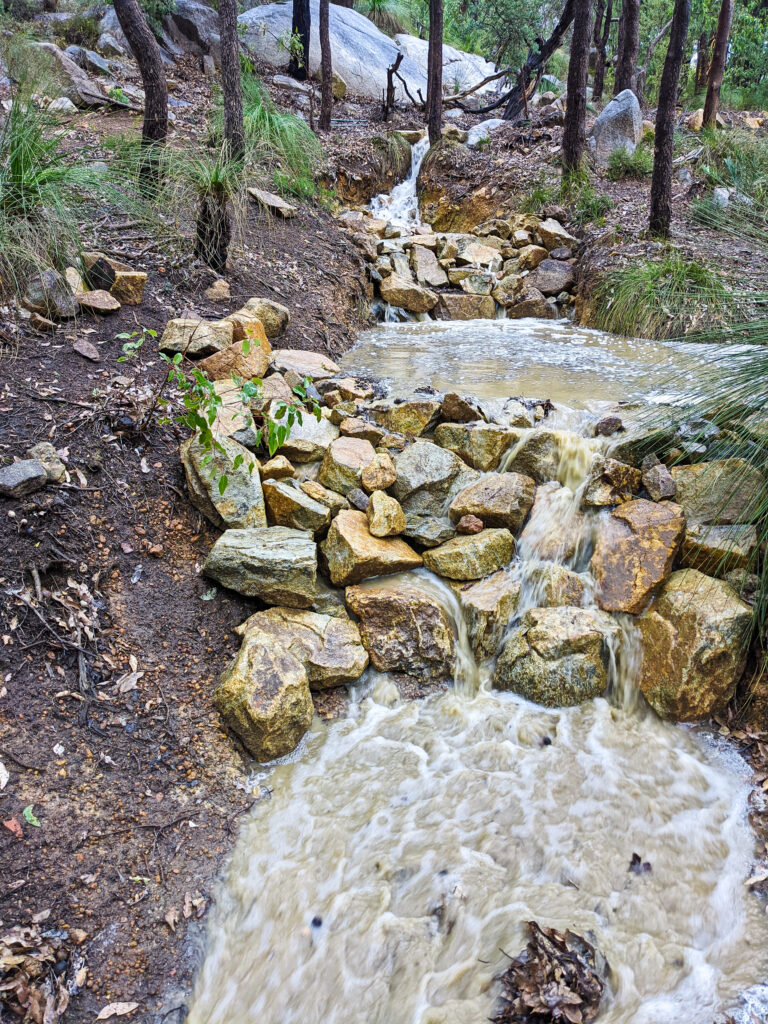Stream rehabilitation is a very important component of our work, as much of the section of Lesmurdie Brook which flows through the area was either eroding or prone to erosion. A high priority for us was to develop plans to stabilize the banks and improve the habitat surrounding the stream. We have installed two leaky dams which are designed to control water surges but allow water flow to be maintained for downstream users. We have also lessened the angle of the creek banks to stabilize them, allow replanting and slow the rate of water flow. Whereever possible we have installed cascade areas to aerate the water and provide habitat. We have planted reeds in and alongside the brook and these plantings have proved very successful indeed. We now have dense patches of Machaerina articulata (formerly Baumea articulata) at both of the flowdams and the pond just east of the Weir Car Park. We have followed up with additional plantings and will continue to do more, as and when required. Sedge planting is better conducted during the summer, the only time when stream flow is low enough to
make planting possible.
Wherever possible, all plantings use stock raised from seed collected in the local area. Seed collection has been underway for some years now and will need to continue in order to get as wide a range of plant species as possible. We have constructed three shade houses on land occupied by the Kalamunda Men’s Shed; this allows us to grow significant numbers of plants for our rehabilitation work (read about our Propagation group) but, equally, importantly, it also gives us space to hold plants supplied by nurseries. In 2022 we added two green houses to improve germination rates and the rooting of cuttings. As soon as they are large enough they are potted on and moved to the shade houses to grow on.
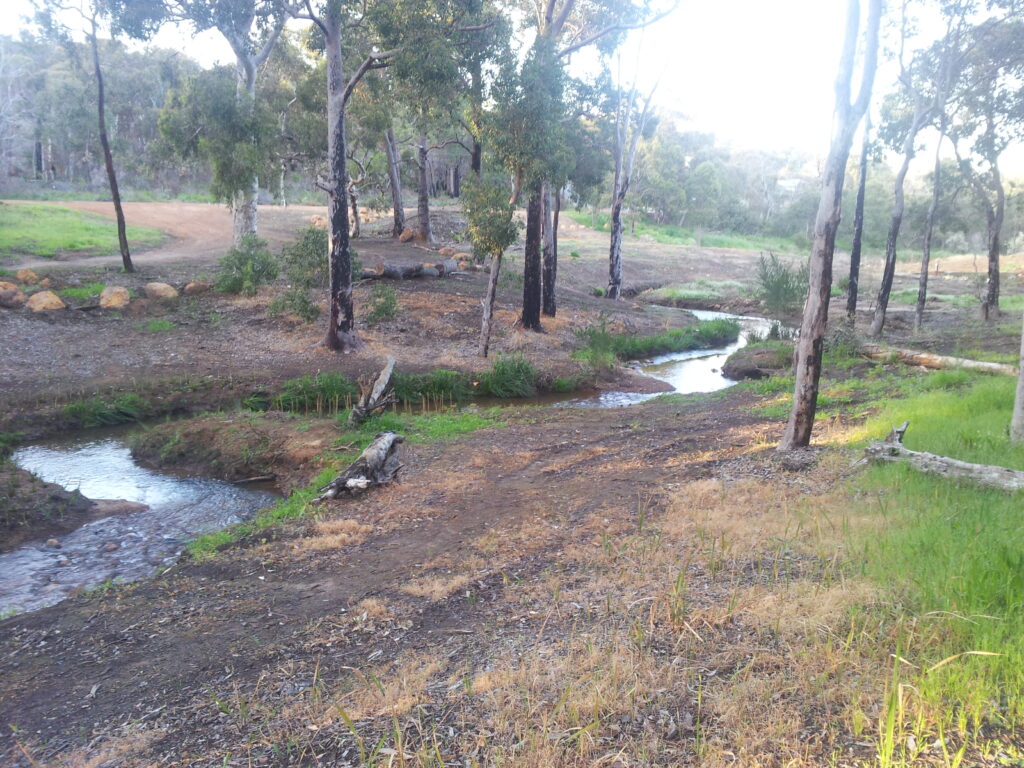


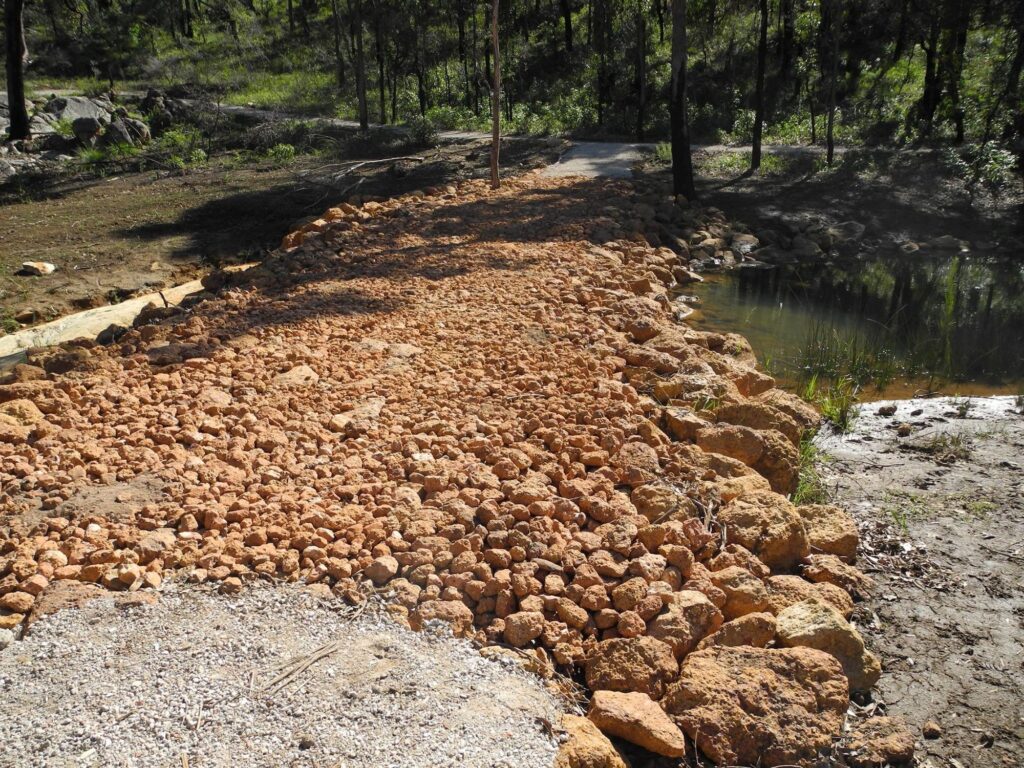


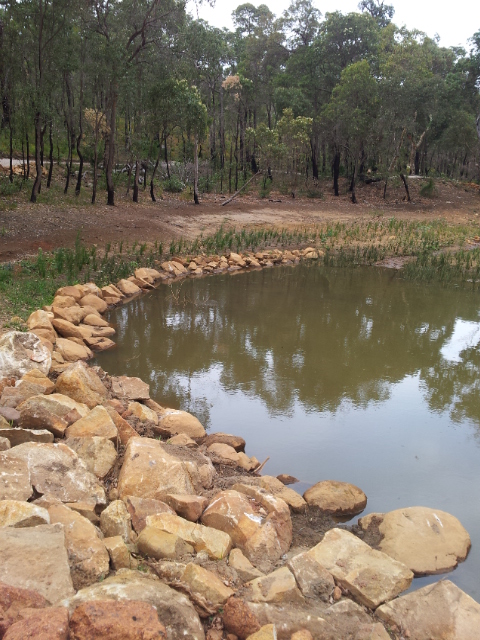

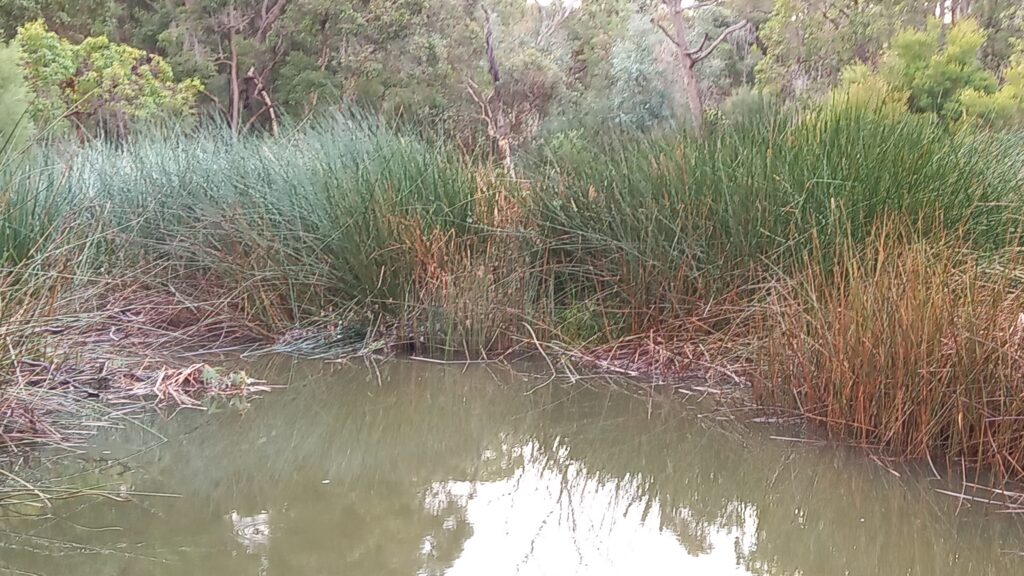

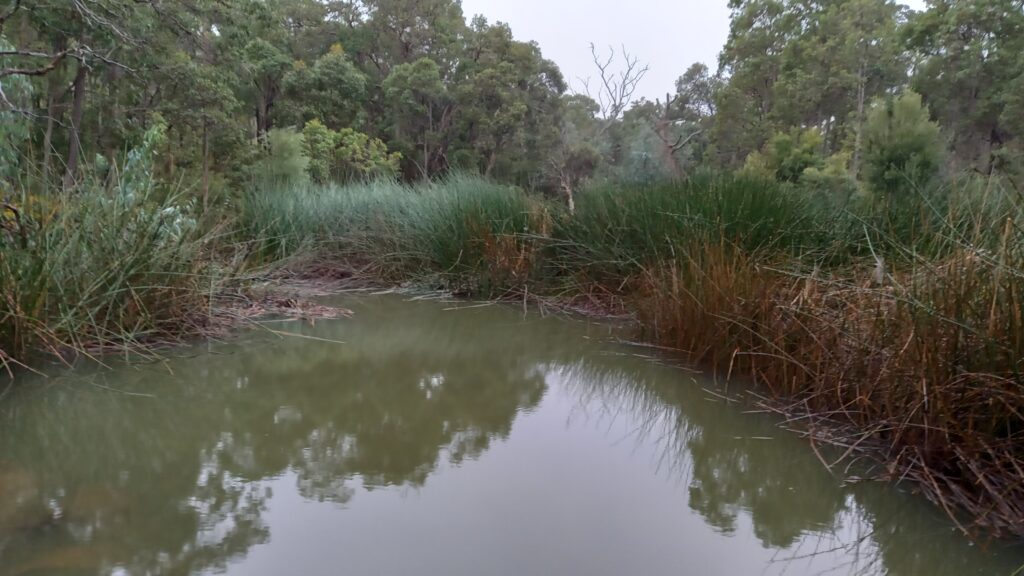

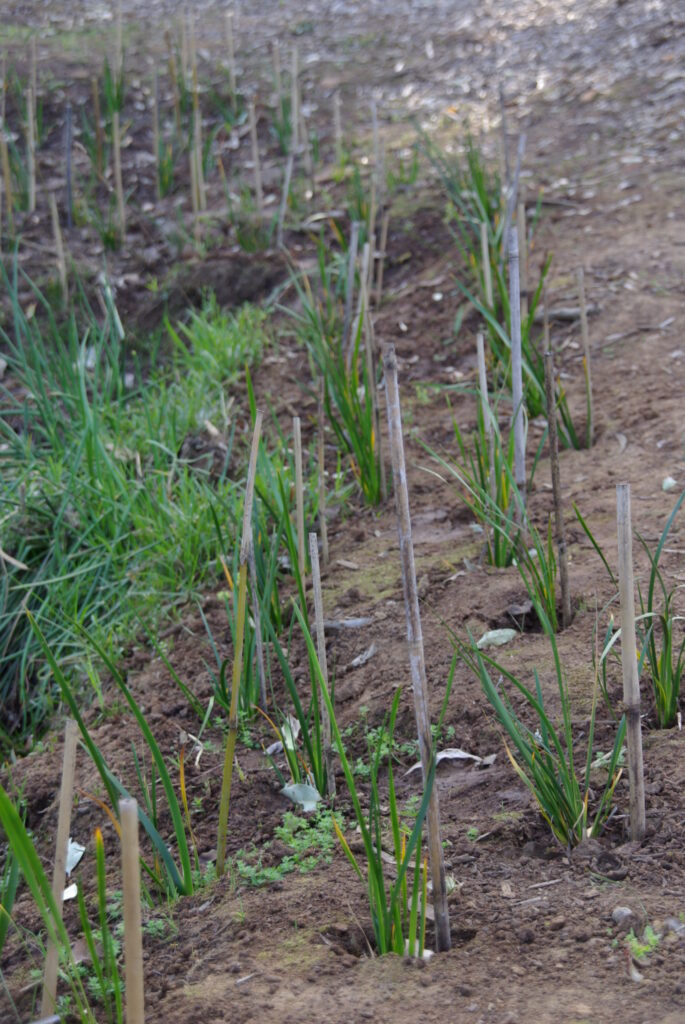


Erosion Gully
Since the building of the housing around Mardolf St, storm water had been entering our site and running uncontrolled down the steep decline to Falls road. This had over the years caused erosion of the surface, in some place to two metres. The area had also become heavily infested with a dense grove of woody weeds – a significant weed seed source threatening the rest of the park. In 2019 grant money from DBCA Rivers and Estuaries Branch was acquired and the friends group took on the management of the solution. The plan was to clear all the woody weeds, re-plant with natives and redirect the stormwater down many branches of rock-lined channels and through existing dense reed beds. Diversion channels were placed at regular intervals along the old erosion gully to prevent the build-up of any substantial flow on vulnerable areas.
By 2023 the project was completed. A range of tree and shrub species endemic to the site were planted and the two ponds were stabilised with riffle dams and planted with Machaerina preissii (formerly Baumea preissii) and Lobelia anceps. Installation of temporary kangaroo fencing proved necessary to protect the young seedling sedges.


